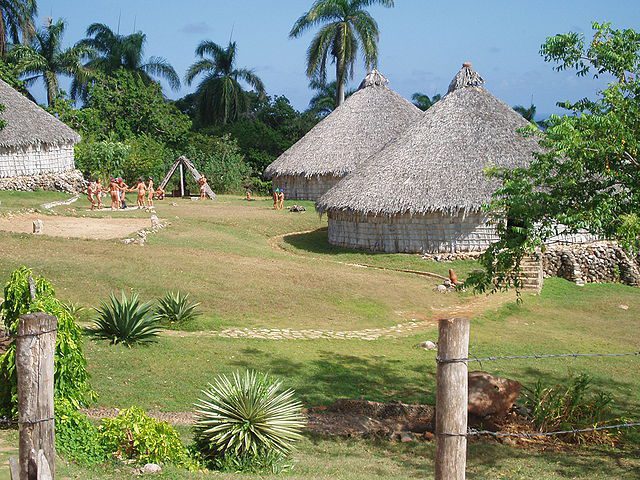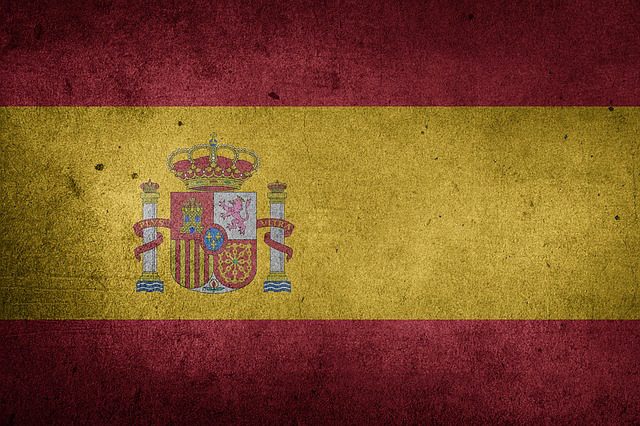I’ve become increasingly interested in learning more about my ancestral heritage. I know very little about it. My family has few documents in the US, I can’t access documents in Cuba, and nobody seems to remember more than a grandparent’s name. I have never even been able to figure out the origins of my surname. The best I have been able to come up with is a general picture of my Cuban roots, narrowing my ancestry down to three major sources. There are other minor influences, but these are the big three.

Indigenous
The Guanahatabey are considered the earliest inhabitants of Cuba. Prior to Christopher Columbus’s arrival, they had been driven to the far west of the island by the arrival of subsequent waves of migrants that included the Taíno.
The Guanahatabey had a distinct culture and language from their neighbours. When Columbus visited them in 1494, his Taíno interpreter could not communicate with them. The Guanahatabey lived outdoors and in caves, and they made no houses. They practised no agriculture. They were hunter-gatherers who subsisted mostly on shellfish and foraging, and supplemented their diet with fish and game. They lacked ceramic pottery, and made stone, shell, and bone tools.
What little we know about the Guanahatabey initially came from recordings by the Spanish of second-hand accounts from Taíno informants. Archaeology helps shed some light on them, but they disappeared and we don’t know much about them.
The rest of the island was inhabited by the aforementioned Taíno. These were part of a cultural group commonly called the Arawak, who inhabited parts of northeastern South America prior to the arrival of Europeans. At the time of European contact in the late 15th century, they were the principal inhabitants of most of the Caribbean and they were divided into three broad groups:
- Western Taíno were in Jamaica, most of Cuba, and the Bahamas
- Classic Taíno were in Hispaniola and Puerto Rico
- Eastern Taíno were in northern Lesser Antilles
In Cuba, the Ciboney were a Western Taíno group and, although much of their territory was under the control of the eastern chiefs, they had a distinct culture and dialect from the Classic Taíno of the rest of the island.
Cuba was divided into 20 chiefdoms. The Taíno were highly agricultural, lived in settlements, and had a matrilineal system of kinship. Taíno spirituality was animistic and shamanistic, centering around relationships with spirits of their main crop yuca (cassava), the sea, the moon, and the general process of life, creation and death. Columbus described the Taínos as a physically tall, well-proportioned people, generous, gentle, and joyous.
After the Spanish arrived, things went downhill pretty quickly for the indigenous people of Cuba. Within 30 years, 80-90% of the Taíno population was wiped out mostly due to infectious diseases, and also massacres, war, and colonial subjugation. But they left their mark. There was substantial racial and cultural mixing and hundreds of Taíno terms and place-names survive.

The Spanish
Columbus claimed Cuba for the new Kingdom of Spain in 1492. It remained a colony of Spain until the Spanish–American War of 1898. Between the 18th and early 20th century, large waves of Canarian, Catalan, Andalusian, Galician, and other Spanish people immigrated to Cuba. The majority of Cubans are descendants of Spaniards.
Going back further, the Spanish people have varied origins due to a long history of invasions and migrations. The Iberians, Pre-Indo-European people, arrived or developed in the region around the 4th millennium BCE. Celtic tribes arrived in the 9th century BCE. The Celts merged with the Iberians in central Spain, creating a local hybrid culture known as Celtiberian. The seafaring Phoenicians, Greeks, and Carthaginians successively settled. Then the Romans came in 200 BCE, followed by the Germanic tribes in 400 BCE, and finally the Moors (African Muslims) in 700 BCE. There were also the Huns, the gypsies from Northern India, and Jews among others. Deciphering the specifics of my Spanish ancestry is an impossible task at this stage.

Africa
In 1501 the Spanish monarchs, Ferdinand and Isabella, granted permission to the colonists of the Caribbean to import African slaves. Between 1842 and 1873, 221,000 African slaves entered Cuba. The most significant number of African slaves were Yoruba from West Africa. In Cuba, Yoruba religion gave birth to Lukumi (Santeria), which continues to thrive not only on the island, but here the US as well.
This is all very insightful and helpful, but also very vague. So, I have a lot of work to do.


I agree it is hard to find and some of it is mind bogglingly academic but it is still great information. I have a lot of really good information on Celtic culture, myths and life (mostly centered in what we know as Ireland, Scotland, Brittany, Wales, Isle of Man and so forth) I haven't come across anything specifically to do with Celtic Spain since that was a rather long time ago. I'll look thru my resources for you though and you can check out my blog for a good literature link.
Thanks! I will check it out.
Here is one for you. If you click on “My tuatha” at my wordpress blog there are some great books listed there. The link above is specifically “spanish celts” though. 😉
I'll also look at my collection of Celtic material. It's mostly Irish/Scottish, but you never know where something may be hiding. You might also want to check out some of the writings of the Romans who were in Spain for a while.
Ann Moura, the authoress, is of Celtic-Iberian descent. You may want to check out her written works, or try to contact her for information.